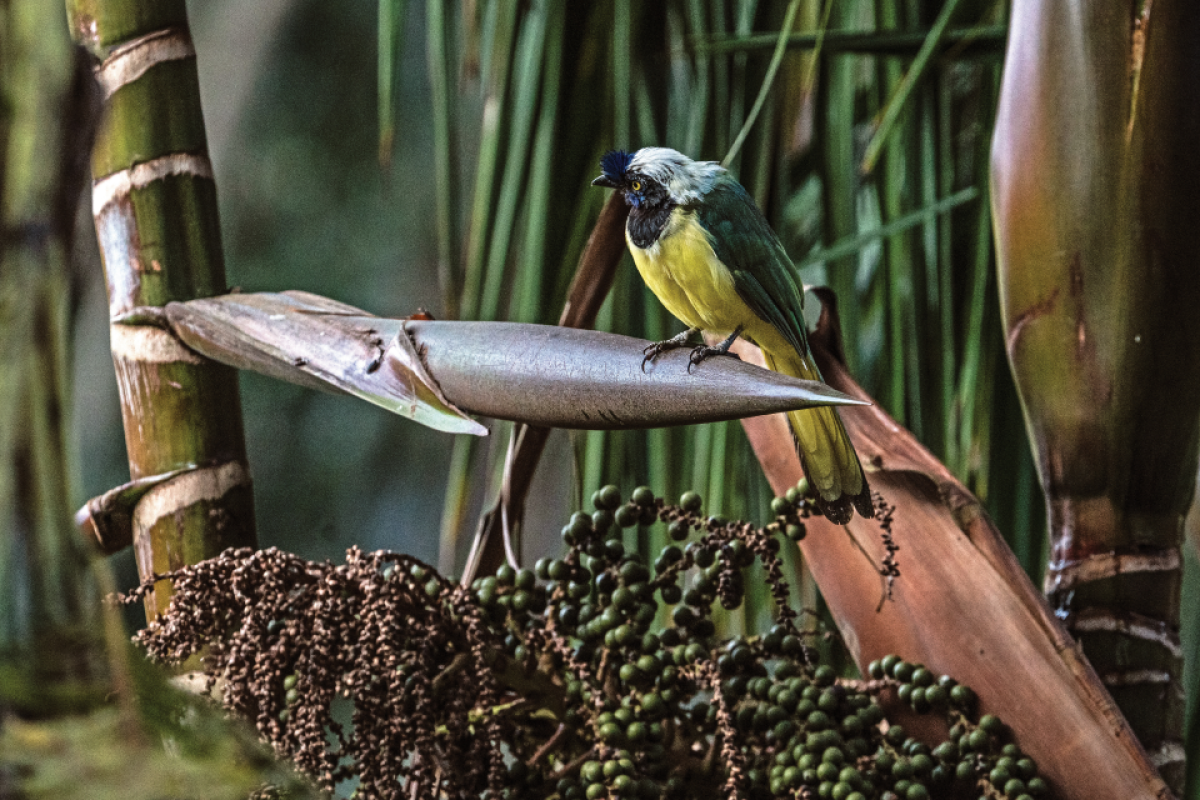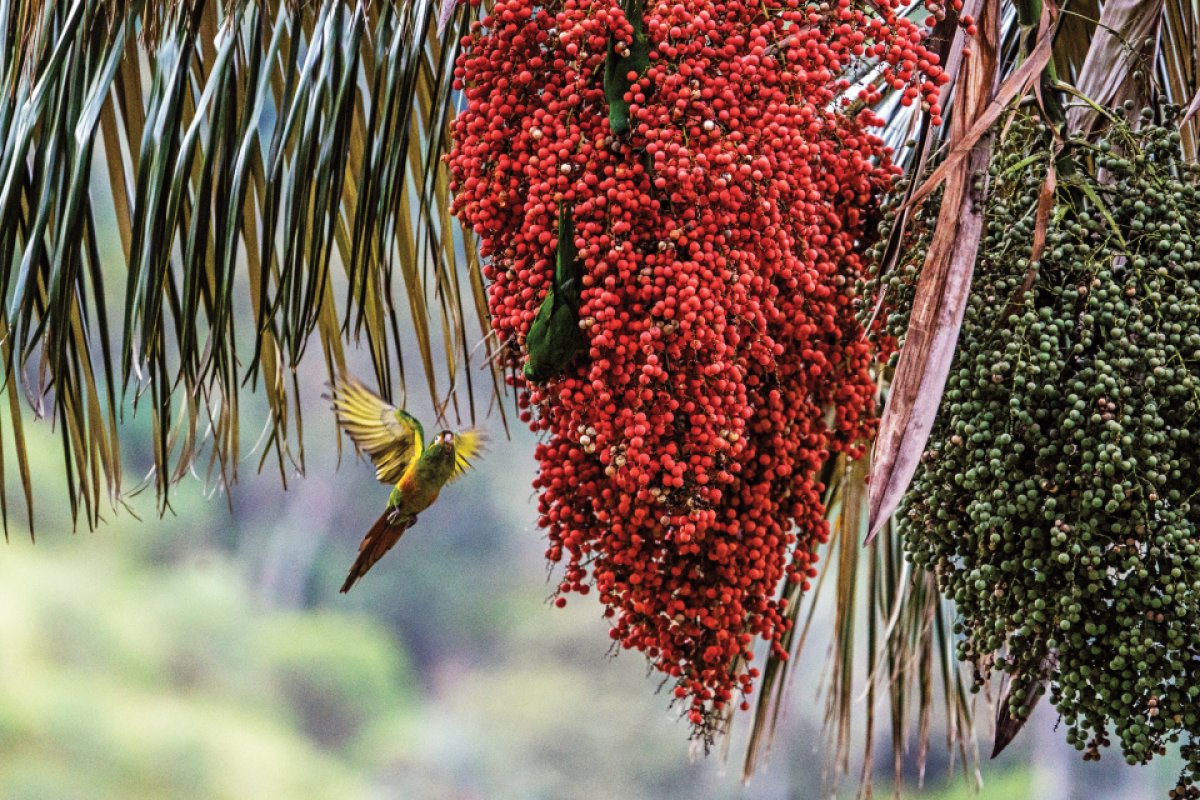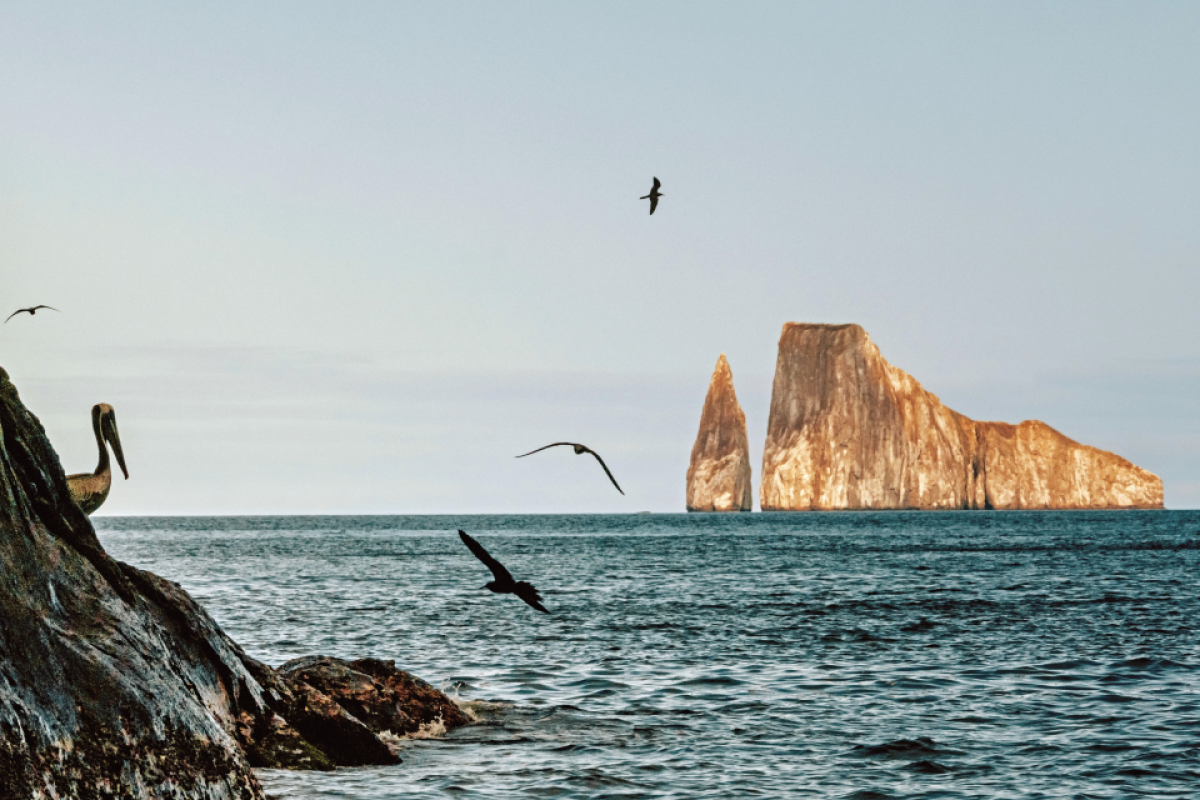By Kristin Toussaint
Editor's note: This story is featured in the winter 2025 issue of ASU Thrive.
Way up in the Andes mountains in Colombia, wax palms stretch their towering, skinny trunks into the sky. Colombia has more than 200 types of palms, but wax palms are special. They’re the tallest palm in the world — reaching up to 200 feet — and they are only found here, in the cloud forests of the Andes.
María José Sanín, an ASU assistant professor in the School of Mathematical and Natural Sciences and a senior global futures scientist, grew up in this region and has been studying the wax palm since 2007. The national tree of Colombia, the wax palm is now endangered, threatened by deforestation. Just 10% to 20% of the original Andean cloud forest cover in Colombia remains, and wax palms cannot survive outside of the forests.
In the summer of 2024, Sanín returned to those forests, amid the misty clouds and white, waxy trunks to take samples of the palms’ leaves, roots and fruits. The research helps understand the effects of river drainage evolution and human use on certain palm species. Her work has explained what factors contribute to the wax palm’s population decline and what humans should do to ensure its survival.
That survival is important not just for the state of the wax palm itself, but for the health of the entire cloud forest ecosystem.
Plants “are the fundamental blocks of ecosystems, producing energy for all elements along food chains,” Sanín says. “I am convinced that the more we focus on their ecology and function, the more prepared we will be to develop and sustain healthy and biodiverse systems.”
And protecting plants like the wax palm also helps local communities develop tourism — adding another layer of protection for these forests.
Preserving the Galapagos
Conserving nature is crucial to the health of the planet. But one of the challenges with conservation is that we can “forget that we are part of nature,” says Paola Sangolqui, ’24 MS in biology, and a third-year PhD candidate at ASU who works with Professor Leah Gerber in the Center for Biodiversity Outcomes.
For Sangolqui, though, that’s never been an issue. Growing up on the Galapagos Islands, where 97% of the land is a protected national park, meant being surrounded by flora and fauna.
As a child, she would walk on the black volcanic rock formations barefoot, and camp at Playa Escondida, the “hidden beach.” She would casually walk by a sea lion, or would be sitting on a pier when a pelican would join her. She snorkeled as a young child, seeing hammerhead sharks.
Now Sangolqui is a researcher working on ecosystem services in the Galapagos Marine Reserve, which extends 40 nautical miles from the islands’ coasts. That work helps update zoning so these lands and waters — home to many species not found anywhere else on Earth — can stay protected. The Galapagos are especially vulnerable to invasive species.
Protecting that biodiversity is important for the study of evolution and ecology and crucial to the livelihoods of the local population, 80% of which depends on nature-based tourism. People want to be able to visit the Galapagos to see the giant tortoises or Darwin’s finches.
“By protecting them (the marine ecosystems), we’re also protecting our well-being, our community,” Sangolqui says.
For her, it’s also a personal mission: She wants her 3-year-old daughter to have that connection to nature that she did growing up.
Being able to help protect her home is a dream job for Sangolqui. And even after a childhood spent amid the wonders of the Galapagos, that connection to nature never gets old. During the pandemic, she was doing fieldwork monitoring sea turtles and saw orcas coming up out of the water right next to her boat.
“It was unbelievable,” she says. “Nature never stops surprising me.”
Solar Canoes Against Deforestation on the Amazon
It was November 2023, and David Manuel-Navarrete, a professor in ASU’s School of Sustainability, was back in the Ecuadoran Amazon.
There, at a lagoon off of one of the rainforest’s milky-brown rivers, he tested a prototype of a solar canoe — a technology co-designed with local Indigenous communities, including the Kichwa, and the Waorani who live on tributaries of the Amazon. A working controller started the canoe’s motor, sparking a new way of transportation for these communities.
In the Ecuadoran Amazon, the wide, shallow rivers that wind their way through the rainforest are everything to locals like the Kichwa and Waorani: their highways, their children’s paths to school, how they hunt and fish, how they earn money through tourism and how they guard the forest.
Many remote territories are accessible only by canoe. During some of his first trips to the Amazon, Manuel-Navarrete realized that solar energy could help.
By 2023, the team had a prototype, made up of an old gas-powered motor retrofitted into an electric version with local parts, by local engineers. That was not just resourceful, it was intentional: If they simply brought in an electric motor from elsewhere, then residents may not have the knowledge or spare parts to make repairs.
“All these things can only work if you have this team that brings different types of knowledges,” Manuel-Navarrete says. “Communities know how to navigate the river, engineers know the mechanics, the sustainability people know how to put everything together.”
Janna Goebel, assistant professor of sustainability education in the School of Sustainability, adds, “Having respectful and reciprocal interactions with Indigenous communities is very important. It is vital that we work on solutions with them, not for them.”
Goebel and Manuel-Navarrete collaborate on Solar Canoes Against Deforestation with ASU’s Melissa K. Nelson, a professor of Indigenous Sustainability in the School of Sustainability.
The team also designed a solar recharging station that provides Wi-Fi to the community.
“That starts opening up opportunities,” Manuel-Navarrete says.
The communities could build schools, or take longer trips for hunting or tourism.
“If these communities disappear,” Manuel-Navarrete says, “we lose the best forest protectors there can be.”
Having respectful and reciprocal interactions with Indigenous communities is very important. It is vital that we work on solutions with them, not for them.
Janna GoebelAssistant professor, ASU School of Sustainability
Fostering Native solutions in the Colorado Plateau
The Colorado Plateau, which covers 130,000 square miles of the American Southwest, is 80% the size of California. Native American tribes oversee a third of it and have been its original stewards. The Native-led Colorado Plateau Foundation protects ancestral homelands through grantmaking, communications and strategic partnerships.
“Our motto, ‘We live where we serve,’ is fundamental to our mission,” says Angela Gonzales, a Hopi tribal member, director of American Indian Studies at ASU, and president of the Colorado Plateau Foundation Board of Directors.
“What sets the Colorado Plateau Foundation apart from other nonprofits is our commitment to fostering genuine, equitable relationships,” Gonzales says.
The foundation recognizes diverse knowledge systems and perspectives, empowering grantees to bring their own visions to life.
Since its founding in 2012, the foundation has awarded $6.2 million in grants to more than 250 Native-led initiatives that work to protect natural environments, preserve languages and promote food security.
One of the grantees is Black Mesa Trust. Led by Vernon Masayesva, ’69 BS in political science, a Hopi leader of the Coyote Clan, the nonprofit communicates the threats to water in the region, like the coal mines that deplete springs and aquifers that the Hopi and Navajo rely on.
Some of the nonprofit’s grantees are ASU graduates, and some staff members are alums of ASU’s Indigenous Leadership Academy.
“It’s education and preparation from Arizona State University that is helping to create modern Native movement and nation-building throughout the plateau area,” says Jim Enote, the foundation’s CEO and a Zuni tribal member.
About the author
The staff editor of the Impact section at Fast Company, Kristen Toussaint was previously a senior news reporter at Metro in New York City.
More Environment and sustainability

'Earth Day Amplified' promotes power of collective action
Everybody loves the concept of sustainability. They want to do their part, and the chance to say they’ve contributed to the well-being our of planet.But what does that actually mean?Arizona State…

Rethinking Water West conference explores sustainable solutions
How do you secure a future with clean, affordable water for fast-growing populations in places that are contending with unending drought, rising heat and a lot of outdated water supply infrastructure…
Meet the young students who designed an ocean-cleaning robot
A classroom in the middle of the Sonoran Desert might be the last place you’d expect to find ocean research — but that’s exactly what’s happening at Harvest Preparatory Academy in Yuma, Arizona.…





